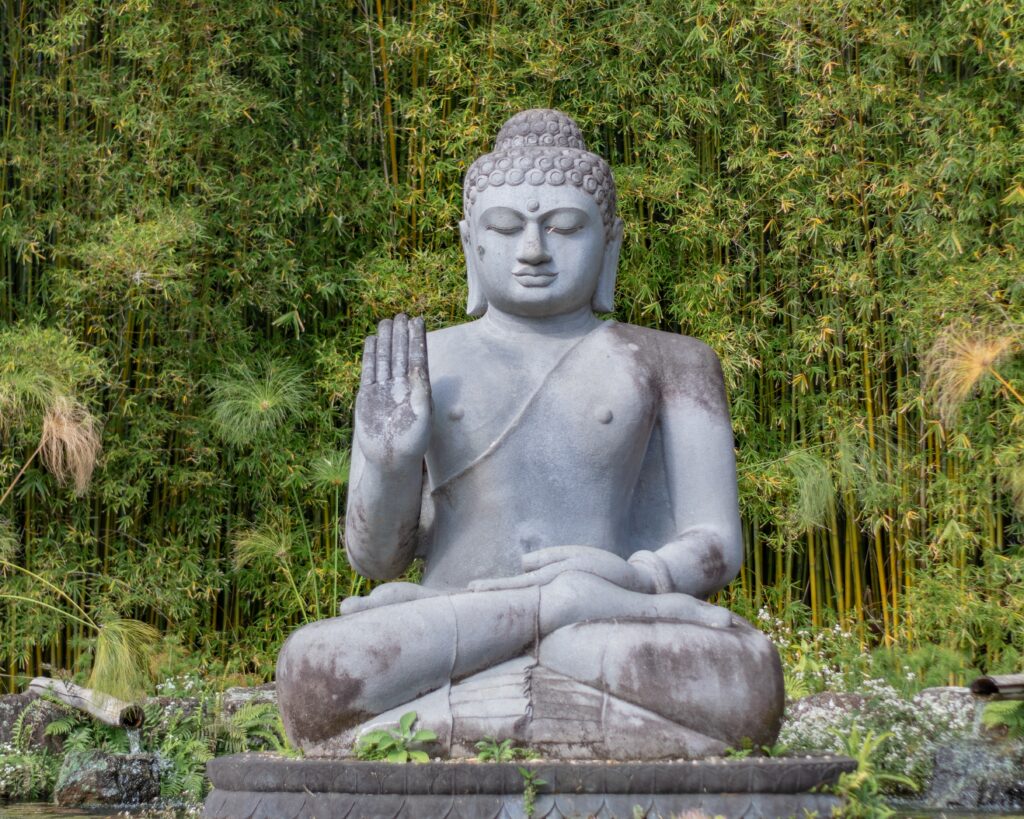Unveiling the Spiritual Path of Gautam Buddha
In the annals of history, few figures have left as profound an impact on spirituality and philosophy as Gautam Buddha. Born as Prince Siddhartha in Lumbini, Nepal, he renounced his life of luxury to seek enlightenment and liberate himself from the cycle of suffering. His teachings on the Four Noble Truths and the Eightfold Path continue to resonate with millions of people around the world.
To truly comprehend the essence of Gautam Buddha’s journey, one must embark on a pilgrimage to the significant places associated with his life and teachings. These sacred sites are imbued with a sense of peace and serenity, offering a glimpse into the transformative experiences that shaped the path of Buddhism. Let’s explore the travel history of Gautam Buddha and delve into the best 10 places to explore, where you can connect with the profound wisdom of this spiritual luminary.
1. Lumbini: The Birthplace of Enlightenment
The journey begins at Lumbini, the birthplace of Gautam Buddha, located in present-day Nepal. Here, beneath the shade of the Bodhi Tree, Queen Mayadevi gave birth to Prince Siddhartha. This sacred site is an embodiment of tranquility, with its lush gardens and ancient monuments. As you walk in the footsteps of Buddha’s birth, you can sense the serenity that enveloped the place where his journey of enlightenment commenced.
2. Bodh Gaya: The Awakening
Bodh Gaya, situated in the state of Bihar, India, holds tremendous significance in the life of Gautam Buddha. It was here, under the Bodhi Tree, that Prince Siddhartha attained enlightenment and transformed into Buddha, the awakened one. The Mahabodhi Temple Complex, a UNESCO World Heritage Site, stands as a testament to this momentous event. The spiritual energy resonating within the temple complex is palpable, drawing devotees and pilgrims from all over the world.
3. Sarnath: The First Sermon
After achieving enlightenment, Gautam Buddha traveled to Sarnath, near Varanasi in India, to deliver his first sermon. This sacred site holds great importance for Buddhists as it marks the beginning of the spread of his teachings, known as the Dharma. The Dhamek Stupa, an impressive structure adorned with intricate carvings, stands as a symbol of this significant event in Buddhist history.
4. Shravasti: The Miracle of Buddha
Shravasti, located in present-day Uttar Pradesh, India, witnessed several miracles performed by Gautam Buddha. This ancient city was an important hub of Buddhist activity during Buddha’s lifetime. The Jetavana Monastery, where Buddha spent a significant part of his monastic life, continues to be a revered pilgrimage site. Explore the remnants of this historical city and witness the echoes of Buddha’s miracles.
5. Kushinagar: The Final Journey
Kushinagar, in the Indian state of Uttar Pradesh, holds profound significance as the place of Gautam Buddha’s Mahaparinirvana, his final departure from the earthly realm. The serene and tranquil ambiance of the Mahaparinirvana Temple Complex evokes a sense of contemplation and introspection. Visit the Ramabhar Stupa, which marks the spot where Buddha attained Parinirvana, to pay homage to the enlightened one.
6. Rajgir: The Vultures
Peak Rajgir, nestled in the hills of Bihar, India, served as an important retreat for Gautam Buddha during the rainy season. The Vulture’s Peak, or Griddhakuta, located here, is where Buddha delivered several profound discourses, including the famous Diamond Sutra. The panoramic views from the peak create an awe-inspiring backdrop for contemplation and self-reflection.
7. Vaishali: The Lotus City
Vaishali, in present-day Bihar, India, holds a special place in Buddhist history. This ancient city witnessed the formation of the first female Buddhist order by Buddha’s foster mother, Mahapajapati Gotami. Pay a visit to the Relic Stupa and the Ananda Stupa to gain insight into the significance of women in Buddhism and their contribution to the spread of the teachings.
8. Nalanda: The Great Monastic University
Nalanda, located in Bihar, India, was once the site of the renowned Nalanda Mahavihara, a center of Buddhist learning and intellectual pursuits. Scholars from far and wide flocked to this ancient university to study Buddhism and various other disciplines. Today, the ruins of Nalanda stand as a testament to the intellectual legacy of Buddhism and the pursuit of knowledge.
9. Kapilavastu: The Lost Kingdom
Kapilavastu, in present-day Nepal, was the capital of the Shakya kingdom and the childhood home of Gautam Buddha. While the ancient city of Kapilavastu may lie in ruins, the Tilaurakot Archaeological Site offers a glimpse into the glorious past of this lost kingdom. Explore the remnants of palaces, stupas, and monasteries, and connect with the history of Buddha’s early life.
10. Sravasti: The Abode of Buddha
Sravasti, located in Uttar Pradesh, India, was one of the most significant cities in the life of Gautam Buddha. It was in Sravasti that Buddha performed the miracle of multiplying himself into a thousand forms, known as the “Twin Miracle.” Visit the Jetavana Monastery, the site of this awe-inspiring display, and immerse yourself in the spiritual energy that pervades this ancient city.
Conclusion:
Embarking on a journey through the travel history of Gautam Buddha is an odyssey of the soul. It is an opportunity to connect with the wisdom of an enlightened being and delve into the essence of Buddhism. From the birthplace of Lumbini to the final resting place of Kushinagar, each destination reveals a different facet of Buddha’s journey, leaving an indelible mark on those who seek spiritual enlightenment.
As you explore these sacred sites, immerse yourself in the teachings of compassion, mindfulness, and inner peace. Allow the serene ambiance to envelop you, and find solace in the presence of ancient stupas, monasteries, and relics. The travel history of Gautam Buddha offers a profound pilgrimage for those in search of spiritual growth and enlightenment.
FAQs
Travel History of Gautam Buddha Best 10 Places to Explore
Q1: What is the significance of the travel history of Gautam Buddha?
A. The travel history of Gautam Buddha offers a profound insight into the places that shaped his spiritual journey and the birth of Buddhism. It allows us to connect with his teachings on a deeper level and gain a firsthand experience of the transformative energy that permeates these sacred sites.
Q2: How many places are associated with the travel history of Gautam Buddha?
A. There are numerous places associated with the travel history of Gautam Buddha, each holding its own significance in the narrative of his life. However, this article focuses on the top 10 places that are of utmost importance in understanding his journey and teachings.
Q3: Can I visit all the places mentioned in the article?
A. Yes, all the places mentioned in the article are open to visitors and accessible for exploration. However, it is advisable to check the local regulations, travel restrictions, and safety guidelines before planning your pilgrimage.
Q4: Are these places only for Buddhists, or can anyone visit them?
A. These sacred sites are open to people of all faiths and spiritual inclinations. They offer a universal message of peace, compassion, and self-realization that transcends religious boundaries. Visitors from diverse backgrounds can find solace, inspiration, and an opportunity for self-reflection in these hallowed grounds.
Q5: Are there any specific rituals or practices to follow when visiting these sites?
A. While there are no strict rules or rituals that must be followed, it is essential to respect the sanctity of these places. Observing silence, practicing mindfulness, and being mindful of local customs and traditions can enhance your spiritual experience and create a harmonious atmosphere for all visitors.
Q6: Can visiting these places deepen my understanding of Buddhism?
A. Absolutely! Visiting these places allows you to immerse yourself in the historical and spiritual context of Buddhism. The palpable energy, coupled with the stories and legends associated with each site, can deepen your understanding of Buddhist philosophy, principles, and the life of Gautam Buddha himself.



